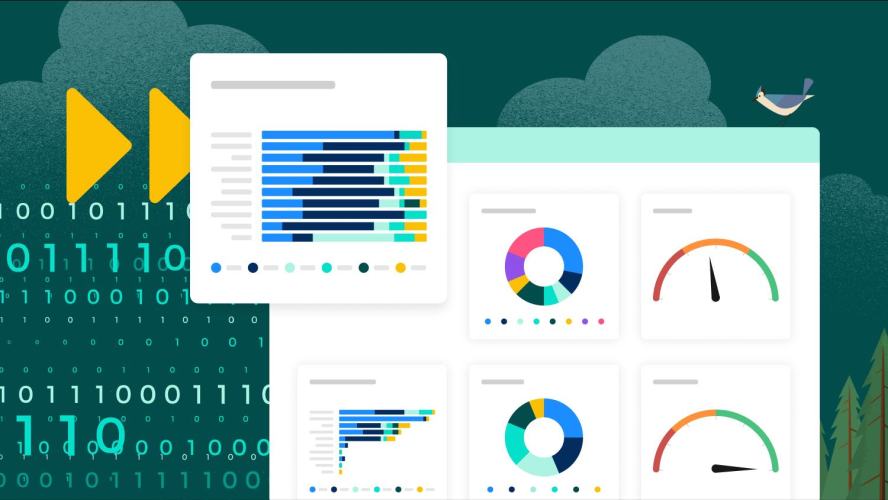How to Build an Effective SDR Commission Plan in 4 Steps

Build a simple SDR plan that motivates your team while allowing you to hit critical targets.

Molly Clarke
Sales development reps – or SDRs – play a pivotal role in modern sales organizations. SDRs are often the first line of qualification and a major source of lead generation. That’s why compensating them well is so important: The right commission structure can motivate your SDRs to jump out of bed in the morning and take action – while the wrong one can make you fall short of your revenue and pipeline goals.
In this article, we show you how to build your first SDR commission plan and share a few examples of effective compensation plans.
What you’ll learn:
- What’s the best structure for an SDR commission plan?
- How to build an SDR commission plan
- Examples of SDR commission plans
Motivate your team with transparent incentive pay
Discover the power of automating commissions with Salesforce Spiff, and easily create incentive programs that scale.



What’s the best structure for an SDR commission plan?
The most common sales compensation plan used for SDRs is a combination of base salary and variable pay – otherwise known as at-risk pay.
Typically, the SDR team is responsible for cold outreach, sales prospecting, and booking meetings. Although they’re directly involved with pipeline and revenue generation, they aren’t typically responsible for closing deals. Therefore, SDRs usually earn commission based on activities and quota attainment, rather than a percentage of closed-won deals.
Before we dig deeper into the specifics of an effective plan, here are a few baseline considerations to keep in mind:
- Your SDR commission plan should be based on meaningful milestones and tied to specific sales performance metrics.
- It should motivate behaviors that lead to positive outcomes and discourage behaviors that don’t.
- Your first SDR comp plan should be easy to understand but nuanced enough to motivate your team.
Read on and we’ll help you implement a commission program that hits each of these three core tenets of an effective SDR plan.
How to build an SDR commission plan in 4 steps
Now that you understand the basics of SDR commission plan structure, let’s dig into some specific steps to help you create your plans.
1. Determine SDR on-target-earnings to get started
On-target-earnings – or OTE – is the amount of money an employee can expect to earn if they achieve 100% quota attainment. This metric is used by companies to communicate the expected salary in roles that have a variable pay component.
When building SDR comp plans, you should start with OTE. When you start by deciding OTE – sometimes referred to as total target compensation – and then work backward, you’ll be able to stay within budget while also ensuring that your SDRs are paid fairly and competitively.
Here are some important metrics to keep in mind throughout this entire process:
- Average contract value: How much is the average customer worth to your business? Consider average deal size and typical contract length to get a better understanding of how much you’re willing to spend to acquire a customer.
- Expected outcomes and conversion rates: If you already have an SDR team at your organization, consider how much business they bring in during a single year and what activities they have to perform to reach that number.
- Revenue goals: How much revenue is your leadership team expecting the SDR team to generate?
For many organizations, SDRs are responsible for generating 30% to 40% of new business revenue. With this as our benchmark, let’s say your company has a goal to bring in $10 million in new revenue. That means your SDR team should be prepared to generate at least $3 million. If you have 10 SDRs, your annual new business quota per SDR is likely going to be around $300,000.
A general rule of thumb is to have a quota-to-OTE ration of 5:1 or 8:1. So in the example above, the OTE for an SDR at your company should be somewhere between $37,500 and $60,000. This falls in line with industry standards.
Of course, these numbers are just an example. The OTE you set for your team will depend on your company’s goals, the size of your SDR team, the cost of your products, and many other factors that make each sales organization unique.
2. Determine the pay mix
Typically, in more entry-level sales positions, the split between base and variable pay tends to lean heavily toward a larger base salary. That’s because a base-heavy pay mix fosters a more stable environment for an SDR to learn critical sales skills while maintaining a stable income. The base vs. variable pay mix for an SDR often falls somewhere between a 50/50 and 70/30 split.
The best commission plans strike a balance that allows SDRs to get by on their base salary alone but doesn’t provide too much cushion. Too large of a base salary can demotivate reps to book meetings, create opportunities, and hit quota.
3. Determine which activities and outcomes to tie to commission
The two most common ways SDRs earn commission are based on activities and/or outcomes. Let’s take a quick look at each:
- Compensate for activities: This approach pays out a set amount for each call made, each opportunity created, response time for inbound leads, or each meeting booked by the SDR. This is often the preferred approach for SDR teams, as they don’t directly close deals.
- Compensate for outcomes: This approach pays out a percentage of sales based on the number of closed deals that were originated by your SDR team.
SDRs are rarely compensated for just one or the other; in most cases, businesses use a combination of activities and outcomes to create commission plans for their SDRs. Compensating on activities alone can lead to a quantity over quality mindset – where the focus becomes the activity itself. But compensating SDRs on outcomes alone can create frustration, especially when the power to close a deal is no longer in the hands of the SDRs.
4. Set different compensation for outbound SDRs vs. inbound SDRs
Outbound and inbound sales development reps (SDRs) are often lumped into the same category, but they serve different functions. While outbound SDRs spend their time prospecting cold leads and reaching out to them, inbound SDRs qualify and generate pipeline from inbound marketing leads. Their commission plans should reflect this difference.
For an outbound SDR team, consider important KPIs like the number of meetings booked, number of cold calls made, discovery calls held, or number of personalized emails sent. For an inbound SDR who isn’t cold prospecting, consider KPIs like lead response time or qualified meetings booked.
The goal with any SDR compensation plan is to essentially flip your sales funnel upside down and work backward to determine how many activities and what types of activities lead to a single closed-won deal. Then use that information to build a compensation plan to motivate and incentivize your SDR teams to complete those activities.
Join the Salesblazer movement
We’re building the largest and most successful community of sales professionals, so you can learn, connect, and grow.

Examples of SDR commission plans
Let’s look at two examples of SDR comp plans. We’ll look at plans for both inbound and outbound SDRs so you can compare the differences.
Here’s an example of an inbound SDR comp plan:
| Inbound Sales Development Rep OTE: $65,000 | Base: $39,000 |
| Quota: Average lead response time: <10 minutes Qualified opportunities: 8 per month Closed/won revenue: $60,000 per month |
| Commission Rate: $500 for < 5 minute lead response time $250 for < 10 minute lead response time $0 for >10 minute lead response time ––– $0 for < 5 qualified opportunities $150/opportunity for 5+ qualified opportunities $250/opportunity for 9+ qualified opportunities 1% of all closed won revenue booked by the SDR |
While this is just an example, you can see how this plan incentivizes a few different behaviors – responding to inbound leads quickly, qualifying inbound leads accurately, and doing everything in their power to generate closed-won outcomes.
Now, let’s look at an example of an outbound SDR commission plan:
| Outbound Sales Development Rep OTE: $65,000 | Base: $32,500 |
| Quota: Meaningful* touchpoints per month: 750 Accepted meetings: 10 per month Closed/won revenue: $75,000 per month |
| Commission Rate: $400 for 1000 meaningful touches $200 for 750 meaningful touches $0 for less than 750 meaningful touches — $0 for less than 6 sales accepted meetings $100/opportunity for 6+ sales accepted meetings $250/opportunity for 11+ sales accepted meetings — 2% of all closed-won revenue booked by the SDR |
*Note: Your definition of “meaningful touchpoint” may vary. For the purpose of this example, consider it to mean any conversation, email, or voicemail in which the SDR interacts with a prospect and talks specifically about a product, solution, or business problem. A phone call with no left voicemail would not be a meaningful touchpoint, as it does nothing to further a conversation with a prospect.
As the plan above shows, incentivizing activities are more aligned with an outbound SDR’s responsibilities: meaningful touchpoints, accepted meetings, and closed-won revenue.
Build your own SDR compensation plan — but don’t overcomplicate it
If you’re just getting started on this journey, don’t be overwhelmed by the sheer number of factors to consider. Instead, focus on the basics and keep it simple. When you create plans with your sales targets in mind, consider OTE and align metrics with the right SDR activities. If you do that, you’ll establish a solid compensation foundation that you can adjust and improve moving forward.
Launch sophisticated compensation plans fast
Is outdated commissions management hurting your growth? See how to quickly create automated incentive plans that motivate your reps.


























